In 1968, the Manson Family moved into George Spahn's dilapidated Southern California ranch. The next year, they committed mass murder.

Los Angeles Public LibraryIn 1968 and 1969, the Manson Family lived at Spahn Ranch in Chatsworth, California, where they shot guns, stripped cars, and plotted the Tate-LaBianca murders.
It was the perfect place to get away. Nestled in the mountains on the outskirts of Los Angeles with the remains of a western-themed movie set and boulder-strewn pathways perfect for horseback riding, Spahn Ranch was an idyllic retreat.
In the 1960s, visitors also enjoyed the isolation the ranch provided. It gave people a sense of calm and natural beauty, as its grounds gave way to scenic mountain landscapes and sprawling, rolling fields.
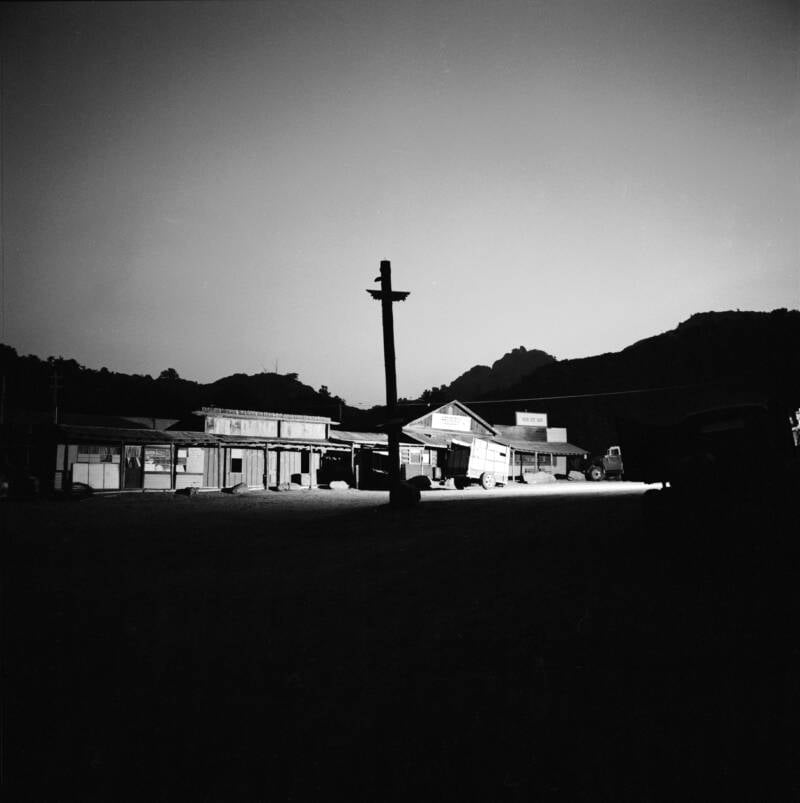
Ralph Crane/The LIFE Picture Collection/Getty ImagesView of the Spahn Movie Ranch, home of the Manson Family, illuminated at night in August 1969, the month of the Tate-LaBianca murders.
Yes, Spahn Ranch was the perfect place to get away – especially if you were trying to indoctrinate a cult in secret and plan a murder spree. And in 1968 and 1969, Charles Manson was doing just that.
This is the story of Spahn Ranch, the disused movie set that served as the Manson Family’s home base before, during, and after the Tate-LaBianca murders that shocked America in August 1969.
Spahn Ranch Before The Manson Family
Before Spahn Ranch played host to the Manson Family cult, it indeed served as an ordinary movie set.
In 1947, Lee and Ruth McReynolds purchased a 55-acre plot of land at the western edge of Los Angeles County. On this land, they opened a trading post and built a western-themed movie set. The Iverson Movie Ranch nearby had been the location for films starring John Wayne and Buster Keaton, and Lee McReynolds hoped to catch some of the overflow.
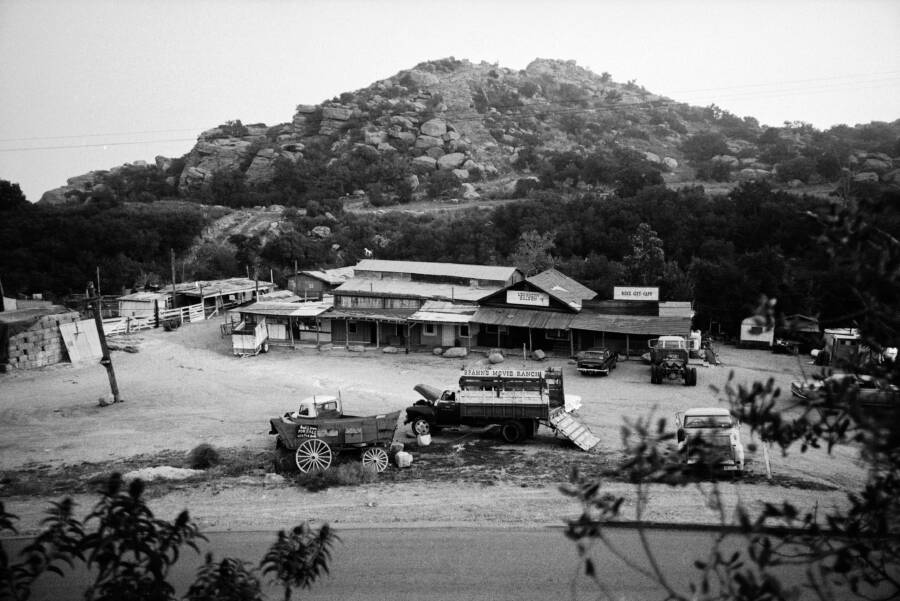
Ralph Crane/The LIFE Picture Collection/Getty ImagesOverview of Spahn Movie Ranch, including its disused western sets.
McReynolds built his sets, but in 1953 sold them to a man named George Spahn, who owned it until his death about 20 years later.
George Spahn had a successful milk business in Pennsylvania, where he was born. By the time he took his wife and 11 children to sunny California, he had grown his enterprise to 35 cows, five wagons, and seven houses.
After hopping over to the West Coast, Spahn operated a ranch out of North Hollywood and grew to be a major supplier of livestock and Western props for motion pictures. He soon split with his wife, who took the kids, and got together with an ex-circus performer named Ruby Pearl.
As the owner of the ranch, Spahn added several more western-themed sets. Several B-movies were filmed at Spahn Ranch. Howard Hughes’ The Outlaw was one of the most notable, along with several episodes of TV’s hit western Bonanza.
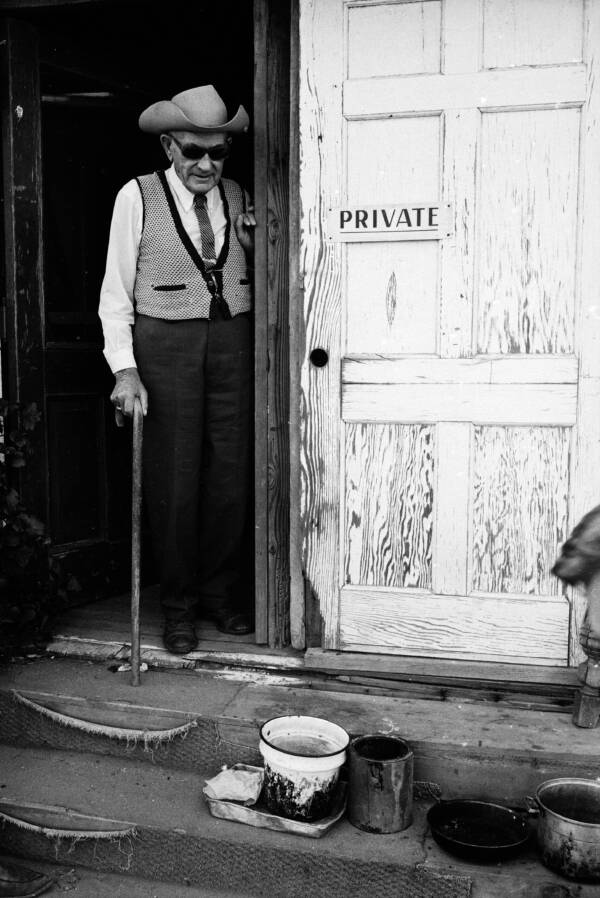
Ralph Crane/The LIFE Picture Collection/Getty ImagesGeorge Spahn, the owner of Spahn Ranch, in late 1969.
But as westerns began to lose popularity, Spahn was forced to diversify. Spahn Ranch became primarily a tourist spot, and horse rentals helped keep Spahn’s business afloat. The ranch was perfect for horseback riding, with various hillside trails, dry riverbeds, and mountaintop overlooks.
But in 1968, it played host to a mystical, maniacal cult leader and his band of loyal followers, who took advantage of Spahn Ranch’s isolation to plot a gruesome series of murders.
The Manson Family Arrives At George Spahn’s Ranch
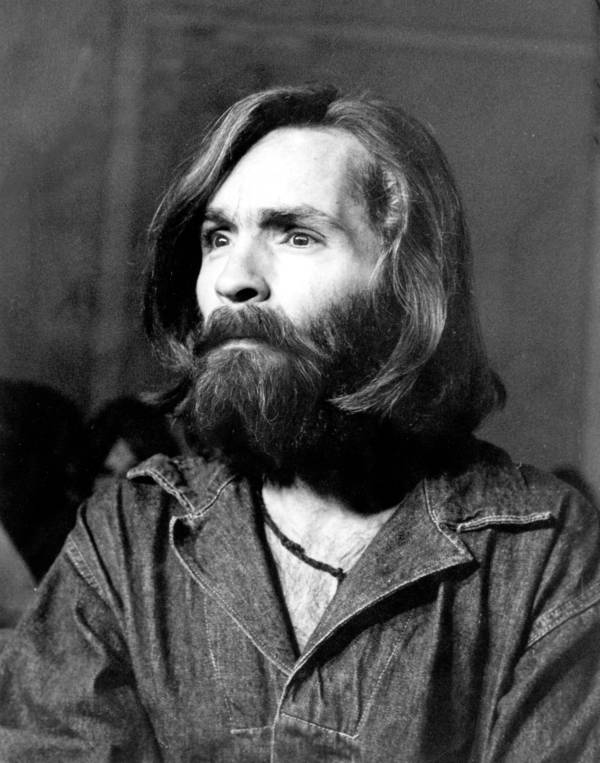
Michael Ochs Archives/Getty ImagesCharles Manson, the cult leader whose followers took up residence at Spahn Ranch in 1968.
In 1968, the year before the murder of Sharon Tate, Charles Manson was freshly homeless and looking for lodging for his “family,” a group of young people who had chosen to follow his mystic teachings and wild lectures. And the isolated Spahn Ranch on the outskirts of Los Angeles was the perfect place.
By then, George Span was 80 years old. He’d spent the last 15 years as a dairy farmer, running the horseback riding rentals from his home on the ranch and living a relatively quiet life in the isolated landscape.
The Manson Family, on the other hand, had lived in anything but relative quiet. For the past year or so they’d driven down the California coast in an all-black Volkswagen minibus, dumpster-dived for food around Los Angeles, and partied with Dennis Wilson, the drummer and co-founder of The Beach Boys. After a falling out with the Wilson, the Family was on the move again.
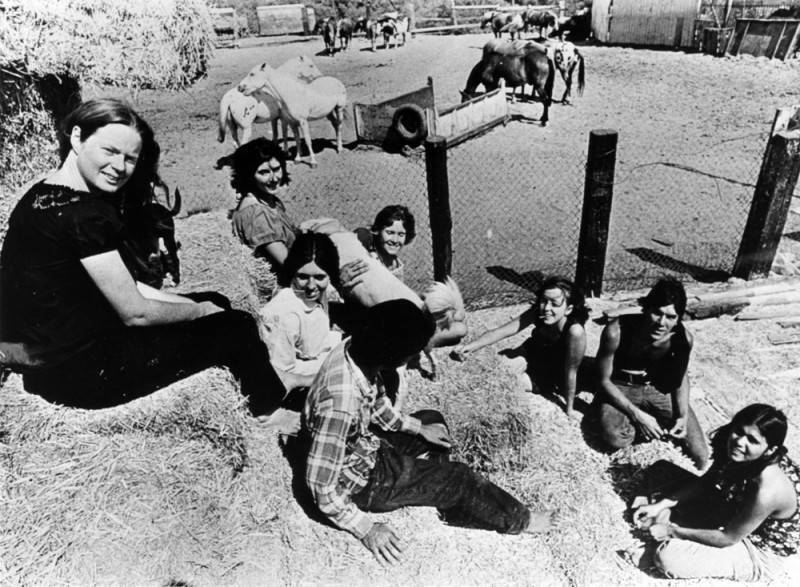
Michael Haering/Los Angeles Public LibraryThe Manson Family at Spahn Ranch, circa 1970.
Charles Manson was intrigued by Spahn Ranch’s isolation and rugged terrain. He thought it would be the perfect place for his cult of 13 women and five men.
George Spahn was happy to have a group of young people moves in, especially when they offered to exchange labor for lodging. Dogged by health issues later in life, Spahn was going blind and had increasing trouble moving around on his own. He was all too happy to have a group of able-bodied youngsters around to help him and Ruby maintain the ranch.
And — of course – he was keen on Manson’s trove of young women. Having his way with Manson’s female followers was part of the deal.
Charles Manson And His Followers Live In Harmony At Spahn Ranch
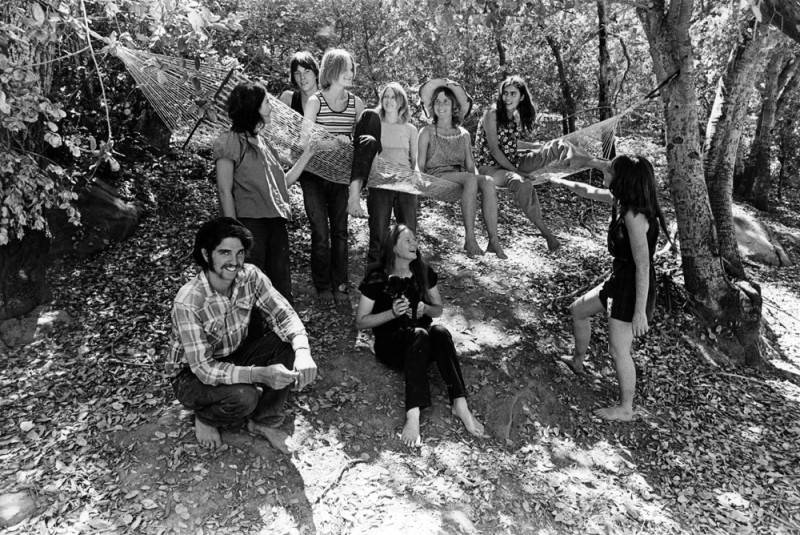
Los Angeles Public LibraryIn 1968, George Spahn’s movie ranch in the Chatsworth area of Los Angeles became the home base for Charles Manson and his disturbed “Family” of followers.
Over the months that the Manson Family lived on the Spahn Ranch, George Spahn and the Family developed a rapport. Spahn gave many of the Family members nicknames, many of which Family members would later become known as to the public.
George Spahn assigned the nickname “Squeaky” to Lynette Fromme — Spahn’s favorite who served as his “eyes” and de-facto wife — after the noise that she’d to make when he ran his hand up her thigh. Charles Watson was called “Tex” after his Texas accent, which Spahn recognized immediately.
But while Spahn enjoyed the young newcomers on his ranch, and indeed spent hours chumming around with them, he was blithely unaware of the horrors they were plotting.
Charles Manson’s most infamous teaching among his cult was his premonition of “Helter Skelter.” Named for the Beatles song of the same name, Manson believed Helter Skelter was a dawning apocalyptic race war. He believed that in the coming years, the Black population and the white population would begin a war, one which would result in the effective end of the white population.
During Helter Skelter, Manson’s family would hide underground in a hole in the desert. After the end of the war, when it was revealed that the Black population had won but were incapable of effectively governing themselves, Manson would emerge from hiding, ride in on a custom dune-buggy, and save them all.
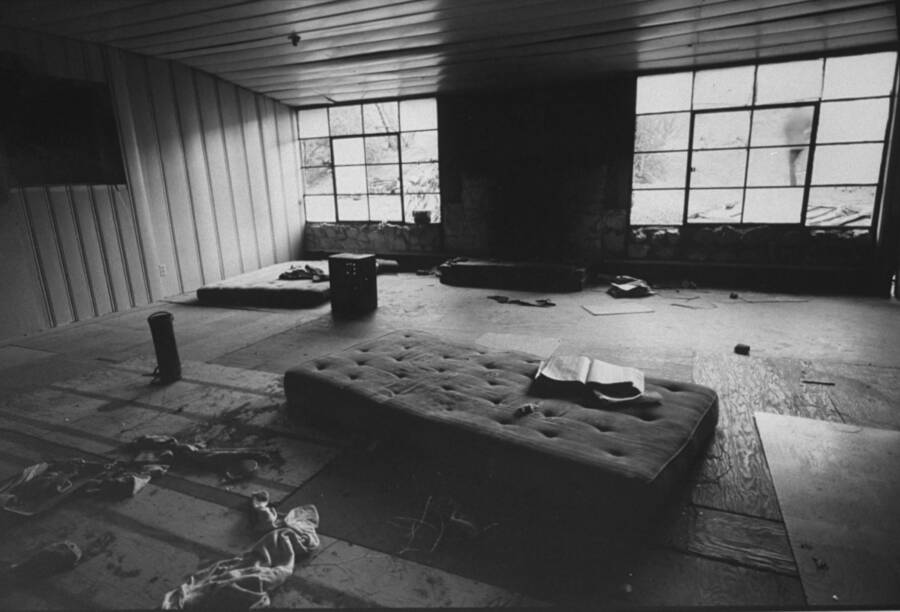
Ralph Crane/The LIFE Picture Collection/Getty ImagesInterior of Spahn Ranch, where Charles Manson lived with his “family.”
Though he had been preaching the dawning of Helter Skelter for years, Spahn Ranch was the first time that he was able to fully immerse his followers in his wild beliefs. Spahn Ranch had no newspapers, no clocks, and no regular visitors, allowing Manson to enforce a sense of timelessness in his followers that made them even more susceptible to his influence.
Spahn Ranch In The Aftermath Of The Tate-LaBianca Murders
The culmination of Charles Manson’s disturbing teachings came on August 8, 1969, when Manson Family members Tex Watson, Susan Atkins, Patricia Krenwinkel, and Linda Kasabian drove, on Manson’s orders, from Spahn Ranch to the home of actress Sharon Tate and director Roman Polanski at 10050 Cielo Drive. After they stormed inside, they brutally murdered Tate as well as her companions Jay Sebring, Wojciech Frykowski, and Abigail Folger.
The following night, this same group as well as Leslie Van Houten, Clem Grogan, and Manson himself, who didn’t actually kill anyone with his own hands, drove to the Los Angeles home of supermarket executive Leno LaBianca and his wife Rosemary and brutally murdered both of them as well. These back-to-back murders shocked Los Angeles and the nation, and prompted a massive hunt for the perpetrators.
Soon, the killers were caught, and Spahn Ranch became center stage for much of the aftermath. Charles Manson was even arrested at Spahn Ranch in August 1969.
That said, despite the fact that the Tate-LaBianca murders were planned at Spahn Ranch, Manson Family members hid out at the ranch following the bloodshed, and George Spahn had been sexually entangled with several of the Manson Family ladies, Spahn never faced any charges for involvement with the crimes.

Herald Examiner Collection/Los Angeles Public LibraryPolice investigate Spahn Ranch after the Manson Family murders.
Spahn, as well as many of the Family members, lived on the farm for a year following Manson’s arrest until a wildfire burned down most of his ranch in September 1970. Four years later, Spahn died and was buried in Eternal Valley Memorial Park.
That doesn’t mean, however, that he remains entirely forgotten when it comes to that infamous summer murder spree. For those who are grossly fascinated with Manson’s life, it is not just Manson’s followers who are of interest, but also those who hovered just outside of his proverbial black hole, and somehow managed to avoid being sucked in altogether.
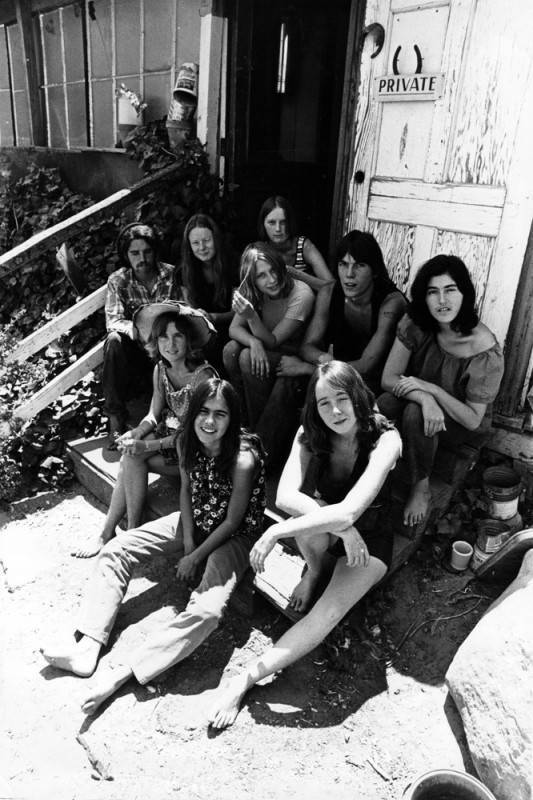
Los Angeles Public LibraryManson Family members at Spahn Ranch, including Mary Brunner (back, wearing stripes) and Squeaky Fromme (front right).
What Happened To Spahn Ranch After The Manson Family And What Is It Like Today?
Today, not much remains of the Spahn Ranch. After being ravaged by the 1970 wildfire, as well as another one years later, the land was re-purchased by the state of California. Now it’s mostly dirt and brush.
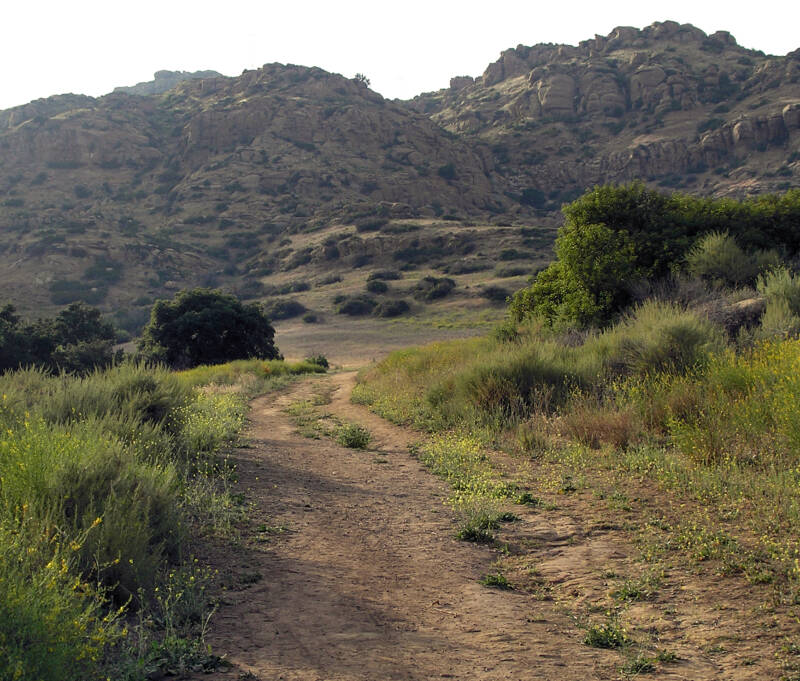
Wikimedia CommonsSpahn Ranch today mostly consists of just dirt paths and brush.
If you look closely enough, however, signs of the Manson Family and their groupies still remain. Carved into boulders strewn across the lands are large X’s, similar to those carved into the foreheads of the Family, including those who committed the Tate-LaBianca murders in August 1969. In one cave in which the family was known to have taken a photo, someone has carved the words “Manson Family Cave.”
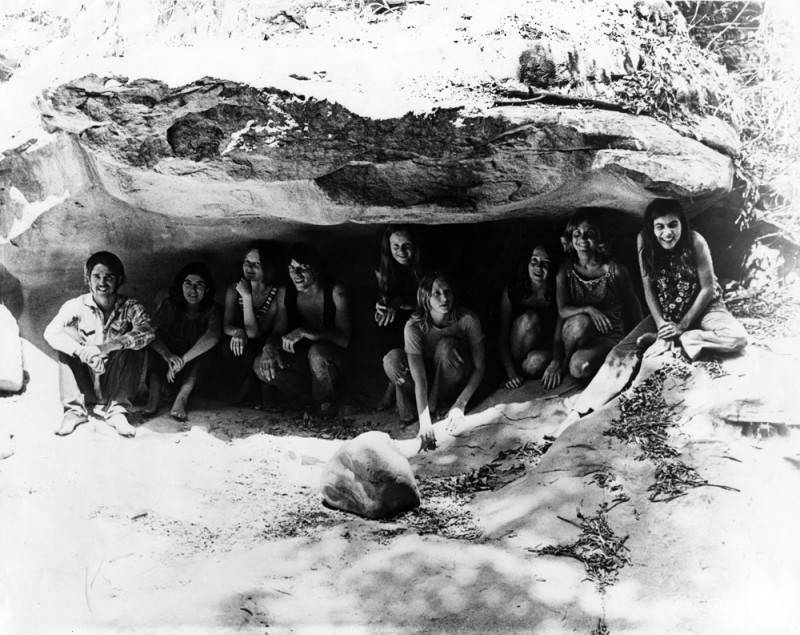
Los Angeles Public LibraryThe so-called “Manson Family Cave” at Spahn Ranch, pictured with some of the Family’s members inside in August 1970.
It seems that while nature has attempted to erase all signs of the Manson Family’s time at Spahn Ranch, there will always be those who are determined to remind us.
After reading about George Spahn and Spahn Ranch, the home base of the Manson Family, learn about Charles Manson’s son Valentine and his mother Kathleen Maddox.





